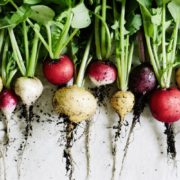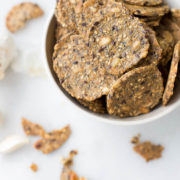Good Grains
You’ve probably lived through the many “NO CARB” diet fads as I have. For years I wouldn’t touch a grain because I thought all carbs were bad. But that’s not entirely true. It depends on the type of carbs. This blog is meant to help you make healthier choices about carbs, but in particular, whole grains.
Whole grains have been a central element of the human diet since early civilization. They are an excellent source of nutrition, as they contain essential enzymes, iron, dietary fiber, vitamin E, and B-complex vitamins. Because the body absorbs grains slowly, they provide sustained and high-quality energy.
The quickest way to prepare great grains is to experiment and find what works for you. Remember one cup of dry grains yields two to four servings. Here are basic directions:
- Measure the grain, check for bugs or unwanted material, and rinse in cold water using a fine mesh strainer. Optional: Soak grains for one to eight hours to soften, increase digestibility, and eliminate phytic acid. Drain grains and discard the soaking water. Not rinsing your grains may result in a more “bitter” taste which is often a complaint I hear about quinoa.
- Add grains to recommended amount of water and bring to a boil. For more flavor, use vegetable broth instead of water. If you do use broth, you won’t need to add as much salt at the end of cooking.
- Note that the texture of grains can be changed by boiling the water before adding the grains. This will keep the grains separated and prevent a mushy consistency. When I cook brown rice, I like to bring the water to a boil first before adding the rice. But when I cook quinoa, I bring the liquid and quinoa to a boil at the same time.
- Reduce heat, cover, and simmer for the suggested amount of time, without stirring during the cooking process. It’s a good idea, especially for beginners or if you are using a new pan or stovetop, to lift the lid and check the water level halfway through cooking and again toward the end – making sure there is still enough water to not scorch the grains. Taking a peak is perfectly fine, just don’t stir!
- At the end of the cooking process, taste the grains to be sure they are fully cooked. Then remove from heat and stir the grain. Let it sit in the pot for a few minutes before serving.
- Chew well and enjoy every bite!
A few of my favorites, which are gluten free, include:
Brown rice, buckwheat, amaranth, millet, quinoa and wild rice.
I typically make the longer cooking grains like brown rice in a large batch on a weekend and freeze in 1 cup portions in Ziploc quart freezer bags. Grains like quinoa cook in about 15 minutes and although I will make a batch large enough to be able to enjoy a few meals, I don’t make a huge batch to freeze.
Enjoy the good grains!













Leave a Reply
Want to join the discussion?Feel free to contribute!